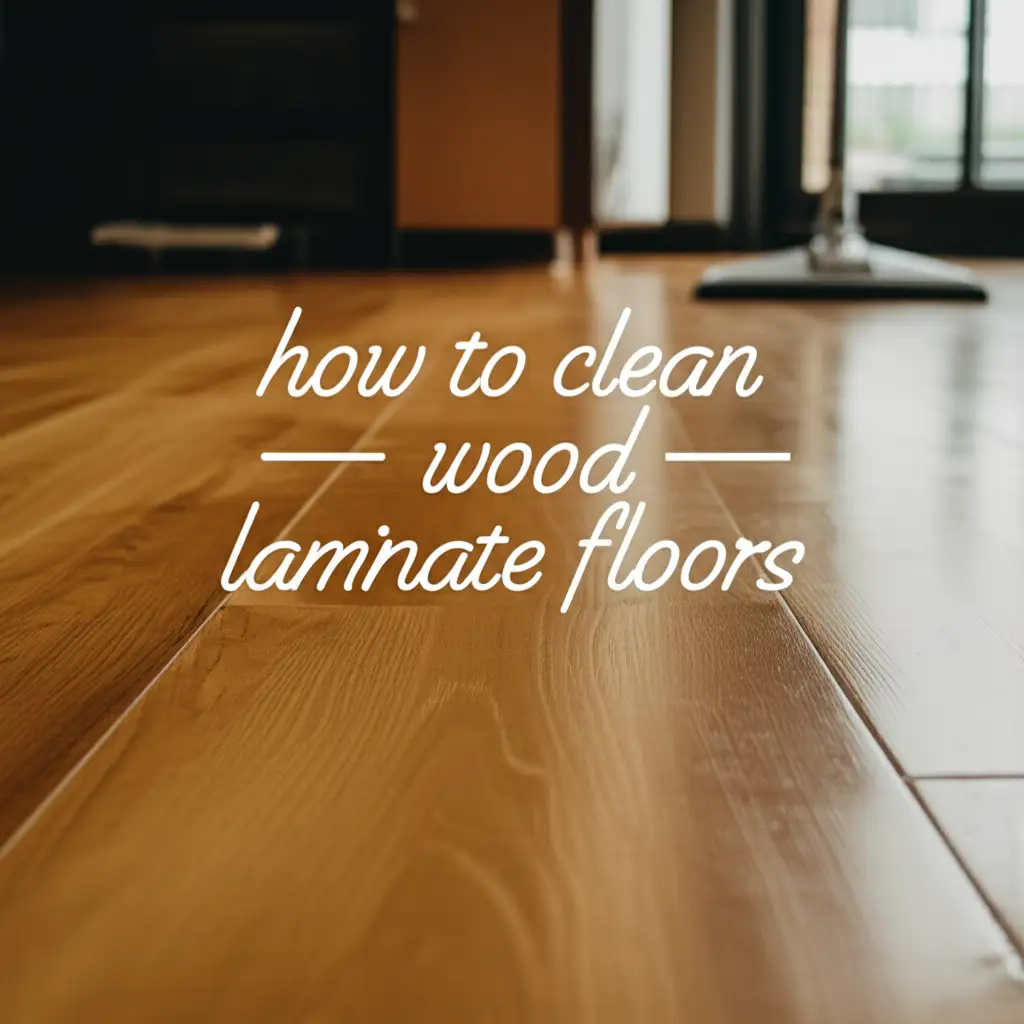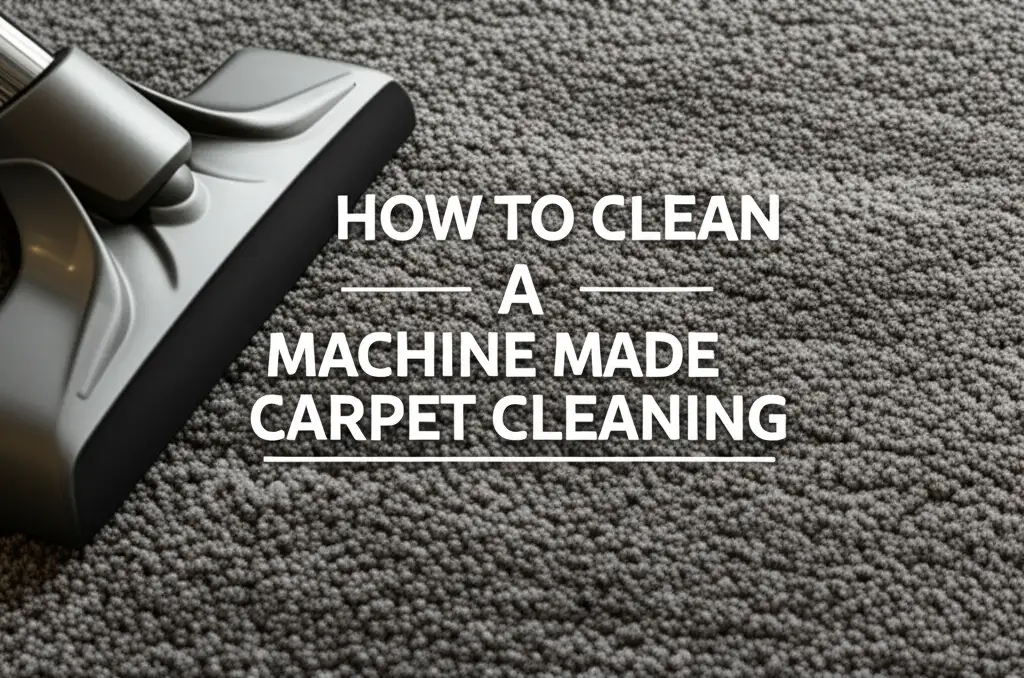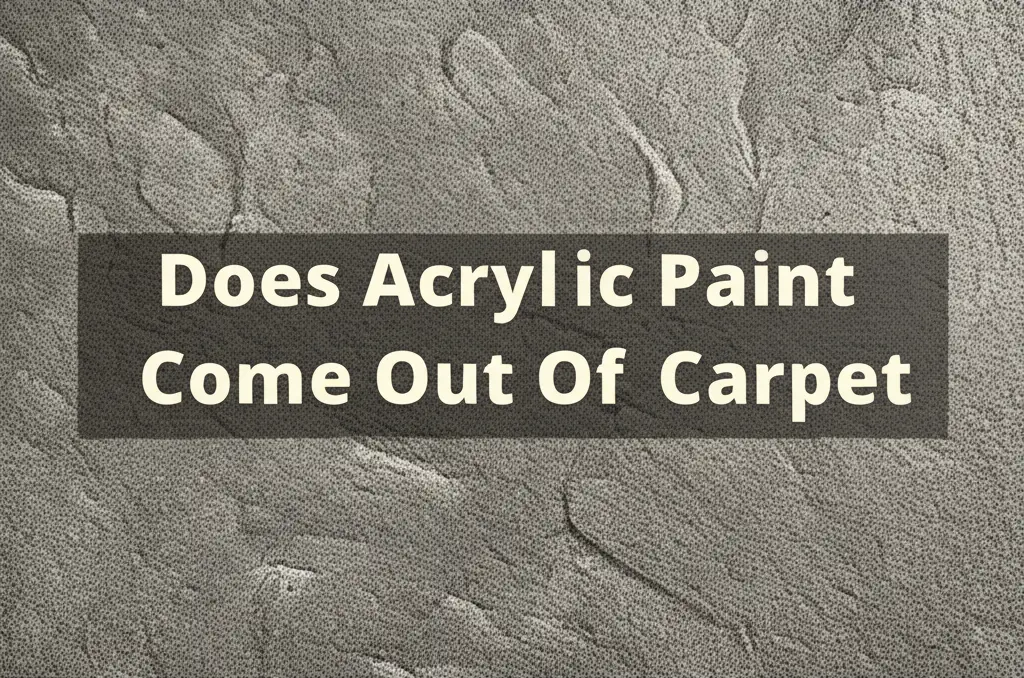· Elira Thomsen · Home Cleaning & Maintenance · 14 min read
How To Clean Carpet Next To A Wooden Laminate Floor

How To Clean Carpet Next To A Wooden Laminate Floor
Welcome to another guide for your cosy home. We often face challenges with different floor types in one space. Today, we talk about how to clean carpet next to a wooden laminate floor. This can feel tricky. You want both floors to look great. You also must avoid damage to the delicate laminate.
It is easy to make mistakes. Water damage can ruin laminate quickly. Harsh chemicals can harm both surfaces. I understand your concerns about keeping your home looking its best. This guide gives you clear steps. We will cover daily care and deep cleaning. You will learn how to handle spills near the transition line. My goal is to help you clean safely and effectively. We keep your carpet fresh and your laminate protected.
Takeaway
To safely clean carpet next to a wooden laminate floor, remember these key steps:
- Protect your laminate floor from all moisture. Use towels or plastic sheeting.
- Use cleaning methods specific to each floor type.
- Address spills on the carpet quickly. This stops liquid from spreading to the laminate.
- Choose gentle, appropriate cleaning solutions.
- Regular maintenance prevents build-up and makes cleaning easier.
You can clean carpet next to a wooden laminate floor safely. First, protect the laminate with waterproof barriers. Then, use appropriate cleaning methods for each surface. Use minimal moisture on the carpet. Blot stains gently. Wipe spills immediately from the laminate. This approach helps prevent damage.
Understanding the Floor Transition
Cleaning carpet near a wooden laminate floor has unique needs. These two surfaces behave differently. Carpet absorbs liquids. Laminate resists them but gets damaged by standing water. The area where they meet is especially vulnerable. Here, moisture from cleaning the carpet can easily seep under the laminate.
My experience shows that moisture is the biggest enemy of laminate. It can cause swelling. This leads to buckling and permanent damage. We need to respect this difference. We must keep laminate dry when we clean the carpet. This helps you avoid costly repairs.
You also need the right tools. Standard carpet cleaning tools are fine for the carpet itself. However, near the laminate edge, you need more control. A small cloth or sponge becomes very helpful. You can target specific spots without over-wetting. This careful approach helps you maintain both floor types.
The fibers of the carpet can also shed. These fibers can get trapped under the laminate edge. This makes the transition look messy. Regular vacuuming helps with this. It keeps the area clean. It also stops debris from getting pushed into the seam.
Essential Tools and Supplies for Cleaning Adjacent Floors
Having the right tools is important for effective cleaning. It helps protect both your carpet and your laminate floor. You do not need many specialized items. Basic cleaning supplies work well. Your choices make a big difference.
First, you need a good vacuum cleaner. Choose one with strong suction. It should have attachments for edges. A crevice tool is very helpful here. It reaches into tight spots. A brush attachment lifts dirt from carpet fibers. Regular vacuuming removes loose dirt. This prevents dirt from spreading.
Next, gather your cleaning solutions. For carpet, use a mild carpet cleaner or plain white vinegar diluted in water. Always test any cleaner in a hidden spot first. This checks for color changes. For laminate, use a specific laminate floor cleaner. You can also use a mixture of water and a small amount of rubbing alcohol. Avoid soap-based cleaners on laminate. They leave dull residues.
You will also need plenty of clean cloths. Microfiber cloths are excellent. They absorb well and do not scratch surfaces. Have separate cloths for carpet and laminate. This stops cross-contamination of cleaning solutions. Sponges or soft brushes are good for spot cleaning carpet. A spray bottle helps apply solutions lightly.
Finally, prepare protective barriers. Old towels or plastic sheeting work best. You place these along the laminate edge. This shields it from any moisture when you clean the carpet. A bucket for water and a mop for the laminate are also useful. I always make sure these items are ready before I start cleaning. It makes the process smooth and safe.
Everyday Maintenance: Protecting Your Floors
Regular maintenance is key to keeping your floors clean. It also stops small issues from becoming big problems. Daily habits make a difference. You can maintain both carpet and laminate easily. This helps your home stay fresh.
Start with vacuuming. Vacuum your carpet often, especially near the laminate. Dirt and dust love to settle there. Use your vacuum’s crevice tool along the seam. This pulls out hidden debris. It stops grit from scratching the laminate. It also prevents dirt from embedding into the carpet.
For your laminate, dry mopping is perfect for daily care. Use a microfiber mop head. It picks up dust and pet hair. This helps you avoid wet cleaning too often. You can also use a soft broom. Make sure the broom bristles are soft. Stiff bristles can scratch the laminate surface.
Address spills immediately. This is perhaps the most important rule. If something spills on the carpet near the laminate, act fast. Liquid can seep under the laminate quickly. Blot the spill on the carpet. Use a clean, dry cloth. Never rub. Rubbing spreads the stain. Then, wipe any liquid from the laminate immediately. Prompt action saves your floors.
Placing a small rug or mat at the transition can also help. This is optional. A thin rug can catch dirt before it reaches either floor type. It provides an extra layer of protection. Ensure the rug has a non-slip backing. This prevents accidents. Good daily habits keep your floors looking new. I always advise my friends to make these small tasks part of their routine.
Tackling Spills and Stains Safely on Carpet
Spills on carpet next to laminate require quick, careful action. You want to remove the stain. You also want to keep the laminate safe. Different stains need slightly different approaches. Always work from the outside of the stain inwards. This stops the stain from spreading.
For fresh liquid spills, blot immediately. Use a clean white cloth or paper towels. Press down firmly. Do not rub. Rubbing pushes the liquid deeper into the fibers. It can also fray the carpet. Repeat with fresh cloths until no more liquid transfers. If the spill is large, place a thick towel over the area. Stand on it to absorb more liquid. This reduces the chance of moisture reaching the laminate edge.
For common stains like food or mud, scrape off any solids first. Use a dull knife or a spoon. Be gentle. Then, apply a small amount of cleaning solution. For most stains, a mix of mild dish soap and water works. Or, use equal parts white vinegar and water. Dab the solution onto the stain with a clean cloth. Wait a few minutes. Then, blot with a clean, damp cloth. Follow with a dry cloth. You can find more specific tips for tough stains like cheese or glitter. Learn how to clean cheese out of carpet or how to clean glitter from carpet for specific challenges.
Pet stains are a common problem. They need immediate attention. Pet urine can damage carpet and laminate. It also leaves odors. First, blot as much urine as possible. Then, use an enzymatic cleaner made for pet stains. These cleaners break down the odor-causing elements. Apply according to product directions. Blot the cleaner dry. Avoid oversaturating the carpet. This is vital to protect your laminate. For more help, learn how to clean carpet stains pets effectively.
Always rinse the area lightly with clean water after cleaning. This removes any cleaning solution residue. Then, blot again until almost dry. Place a fan nearby or open a window. This helps the carpet dry quickly. Quick drying prevents mold and laminate damage. I always ensure the area is completely dry before walking on it.
Deep Cleaning Methods for Carpet Near Laminate
Deep cleaning the carpet near your laminate floor needs extra care. You must protect the laminate from moisture. These methods remove deeply embedded dirt and refresh the carpet. They are not for daily use.
One common method is steam cleaning or hot water extraction. This process uses hot water and cleaning solution. It pushes them into the carpet fibers. Then, it extracts the dirty water. When cleaning near laminate, be extremely cautious. My advice is to use a portable spot cleaner. These machines are smaller. They allow more control. Avoid using a large carpet cleaner across the transition. This reduces the risk of water splashing onto the laminate. Find out if steaming a carpet cleans it effectively.
Before you start, place thick towels or plastic sheeting along the laminate edge. Tape them down if needed. This creates a barrier. Only apply cleaning solution to the carpet. Use minimal water. Work in small sections. Make sure the suction on your cleaner is strong. It should pull up most of the moisture. Go over the same area multiple times. This extracts as much water as possible.
Another deep cleaning option is dry cleaning the carpet. This method uses very little or no water. Instead, it uses a special absorbent powder or foam. This powder attracts dirt. You sprinkle it on the carpet. You then work it into the fibers with a brush. After a set time, you vacuum up the powder. This method is much safer for areas next to laminate. There is almost no risk of water damage. Learn more about if you can dry clean a carpet.
You can also use a specialized carpet shampoo. Dilute the shampoo as directed. Apply it with a sponge or a soft brush. Work it into a lather. Do not saturate the carpet. Then, wipe away the foam with a clean, damp cloth. Follow with a dry cloth. This method uses more water than dry cleaning. So, use it with caution near laminate. Always ensure thorough drying after any wet cleaning. Consider placing fans to speed up the process.
Protecting Your Laminate During Carpet Cleaning
Protecting your laminate floor is paramount when cleaning adjacent carpet. Laminate is durable but very sensitive to moisture. A few simple steps can prevent costly damage. I always make these preparations before any carpet cleaning.
First, create a physical barrier. Lay down thick, absorbent towels along the laminate edge. Push them firmly against the carpet. You can also use plastic sheeting for extra protection. Place the plastic under the towels. This ensures no water reaches the laminate. Tape the plastic down if it shifts. This barrier catches any splashes or overspray. It also stops water from seeping directly into the laminate seams.
Next, control moisture when cleaning the carpet. If you use a wet method, use as little water as possible. Do not over-saturate the carpet fibers. Focus the cleaning solution only on the carpet. Avoid getting any cleaner on the laminate. If any drops fall, wipe them away immediately. Keep a dry cloth ready at all times.
Consider using a smaller cleaning tool near the transition. A hand-held spot cleaner is better than a large machine. It gives you more control. You can direct the nozzle precisely. This reduces the chance of accidental splashes. When vacuuming after cleaning, ensure the vacuum’s wheels do not scratch the laminate. Some vacuum cleaners have soft wheels.
Be mindful of carpet tape. If you have carpet tape holding the carpet edge down, be careful. Water can dissolve the adhesive. This leaves sticky residue on your laminate. If you ever need to remove carpet tape, learn how to remove carpet tape from wood floor safely. This ensures no damage to the laminate surface.
Finally, ensure quick drying. After wet cleaning the carpet, use fans or open windows. This speeds up the drying process. Do not let the carpet stay damp for long. Lingering moisture increases the risk of laminate damage. It also prevents mold growth. I always double-check the laminate edge for any dampness before I consider the job finished.
When to Call a Professional for Floor Cleaning
Sometimes, a cleaning task is too big for a DIY approach. Knowing when to call a professional saves time and prevents damage. This is especially true when cleaning carpet next to a laminate floor. Professionals have specialized tools and knowledge.
One reason to call a pro is a very large or stubborn stain. Some stains penetrate deep into carpet fibers. They resist regular cleaning methods. Examples include old pet stains or oil-based spills. Professionals have powerful extractors and specific stain removers. They can often remove stains you cannot. They also know how to manage moisture. This protects your laminate.
Another reason is widespread dirt or odor. If your carpet looks dull all over, or if there is a lingering smell, deep cleaning is needed. A professional service offers powerful steam cleaning or dry cleaning. They can refresh your entire carpet. They have the equipment to dry the carpet quickly. This is crucial when laminate is nearby. Professional cleaners also understand different carpet types. They use methods that suit your specific carpet material. You can learn about different machine-made carpet cleaning techniques to understand the differences.
If you are worried about damaging your laminate, a pro is a good choice. They are experts at moisture control. They use barriers and high-powered extraction. This minimizes the risk to your laminate. They also carry insurance. This provides peace of mind. It covers any accidental damage during cleaning.
Finally, consider professional help if you lack the time or proper equipment. Renting carpet cleaning machines can be a hassle. They are often heavy. They also require specific cleaning solutions. A professional service handles everything. They bring their own gear. They leave your floors clean and safe. I recommend getting quotes from a few reputable companies. Ask about their methods for areas with mixed flooring.
FAQ Section
Q1: Can I use a regular carpet cleaner next to my laminate floor?
Yes, you can use a regular carpet cleaner. Be very careful. Protect your laminate with towels or plastic sheeting first. Use minimal water. Focus the cleaner only on the carpet. Immediately wipe any splashes from the laminate. Extract as much moisture as possible from the carpet.
Q2: What is the best way to prevent water damage to laminate while cleaning carpet?
The best way is to use a strong barrier. Place thick, absorbent towels or plastic sheeting tightly against the laminate edge. Keep them there during the entire carpet cleaning process. Always blot spills quickly. Use minimal moisture when cleaning the carpet. Dry the area immediately.
Q3: Are there specific cleaning solutions I should avoid near laminate?
Avoid harsh chemicals, ammonia-based cleaners, and oil-based soaps. These can damage laminate finish. Also, avoid excessive water. Even plain water can harm laminate if it sits on the surface for too long. Stick to cleaners designed for laminate floors on that surface.
Q4: How often should I clean carpet next to laminate?
Vacuum the carpet and dry mop the laminate daily or every other day. Address spills immediately. Deep clean the carpet section every 6-12 months. This depends on traffic and use. Regular care stops dirt build-up. It also protects your laminate.
Q5: Can I use a carpet dry cleaning method to protect my laminate?
Yes, carpet dry cleaning methods are excellent for protecting laminate. These methods use very little or no water. They rely on powders or foams. You apply them to the carpet, then vacuum them up. This greatly reduces the risk of water damage to the adjacent laminate floor.
Q6: What should I do if water gets on my laminate during carpet cleaning?
Act fast if water gets on your laminate. Immediately wipe it up with a dry, absorbent cloth. Pay close attention to the seams. Ensure no standing water remains. You can also place a fan to help dry the area quickly. Fast action minimizes damage.
Conclusion
Cleaning carpet next to a wooden laminate floor can seem challenging. Yet, with the right approach, it is simple. You can keep both surfaces looking their best. The key is to understand the differences between these materials. Always prioritize protecting your laminate from moisture. My goal was to give you clear, actionable steps.
We talked about daily care and tackling spills. We also discussed deeper cleaning methods. Remember, quick action on spills saves both your carpet and your laminate. Using physical barriers like towels is a simple but effective defense. Choosing the right cleaning solutions also makes a big difference. They keep your floors safe.
You now have the knowledge to maintain your mixed flooring confidently. Regular vacuuming and immediate spill response are your best friends. When in doubt, a professional cleaning service offers a safe solution. They have the expertise to handle tricky floor transitions. You can achieve a clean and beautiful home. Start applying these tips today. Your floors will thank you!





